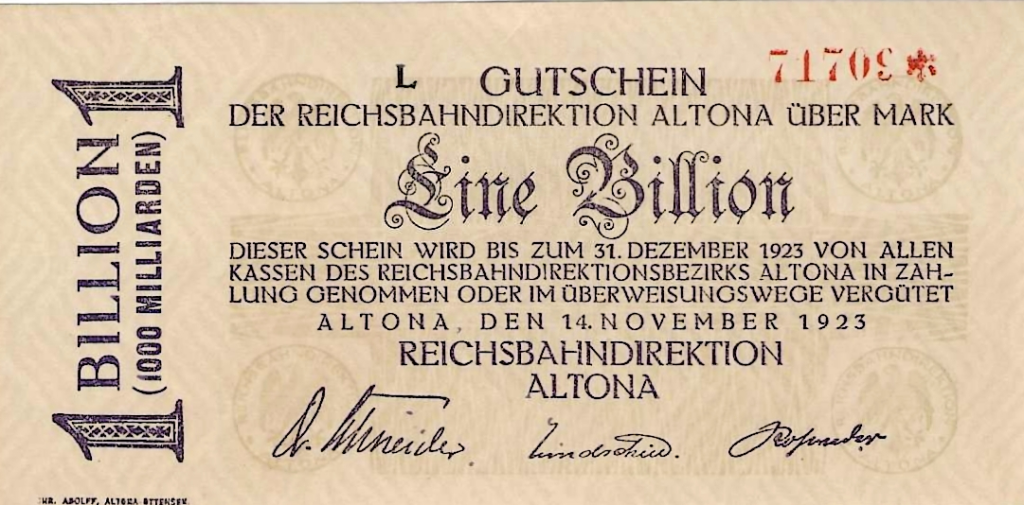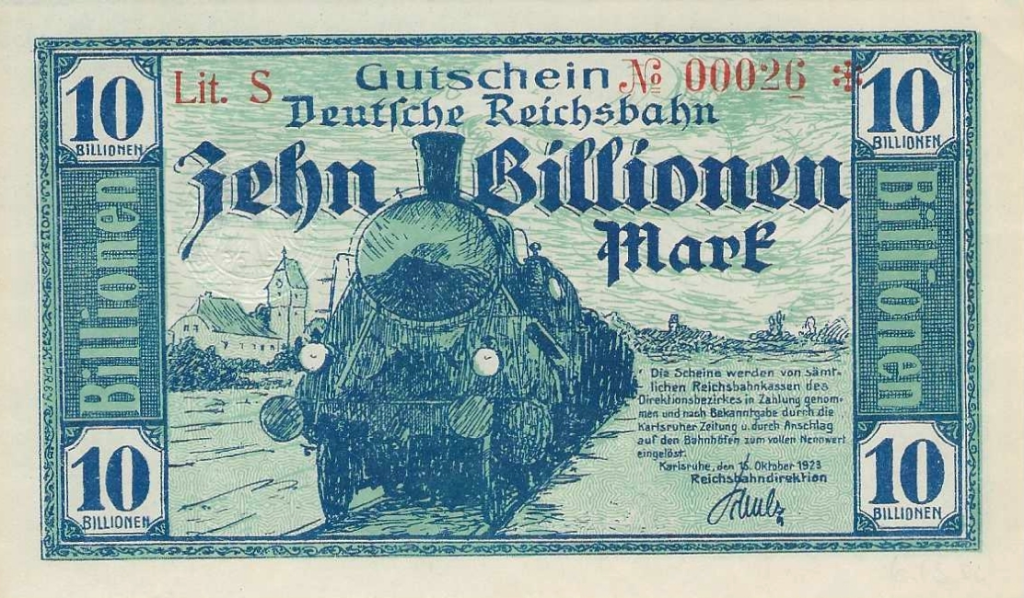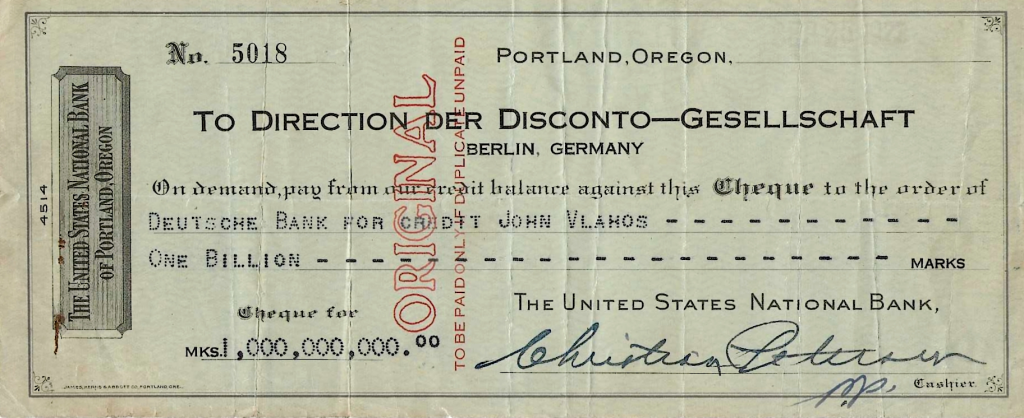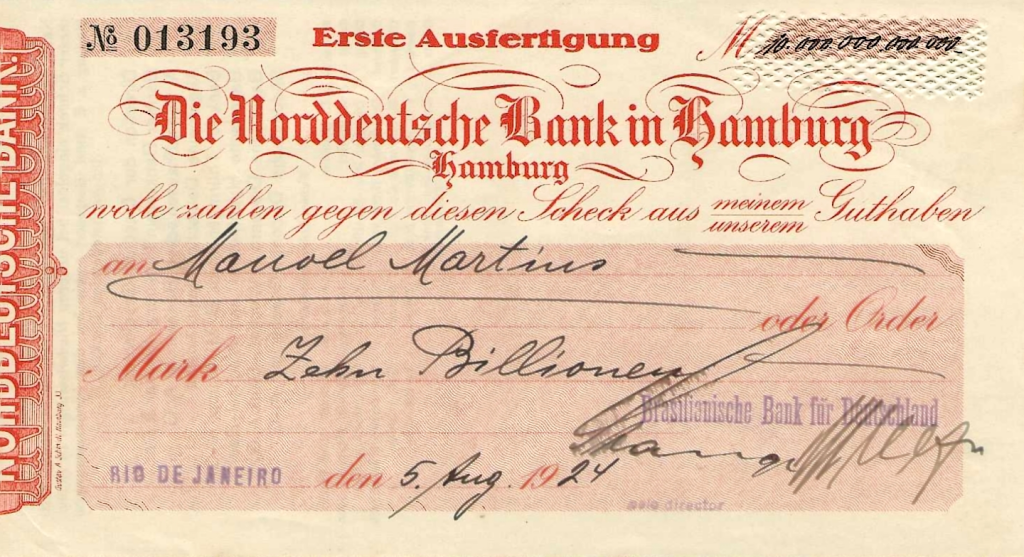
In the early 1920s, the German economy began to teeter under the weight of the obligations imposed on the country by the Treaty of Versailles. Germany’s reparation payments had to be paid in hard currency. Starting in 1921, the Reichsbank began printing more and more paper marks in order to buy up the foreign exchange necessary to meet its treaty obligations. Inflation began to rapidly force up prices in Germany into 1922. The mark declined to 160 to a US dollar.
Germany was unable to meet its reparations payments in late 1922. In response, French and Belgian troops occupied the Ruhr valley — the industrial heat of Germany — to ensure Germany met its obligations. The German government ordered a general strike in response to the occupation. The striking German workers continued to paid but the only way to raise the cash to pay their wages was to print more marks.

These factors, coupled with the weakened state of the German economy, brought hyperinflation in 1923. At its peak in November 1923, the dollar exchange was 4,210,500,000,000 marks.

The hyperinflation necessitated the printing of higher and higher denomination notes. The face amount of banknotes and other instruments quickly went through the millions and into the billions of marks. Reichsbank notes topped out at 10 billion marks.

Foreign exchange departments at banks outside Germany found their customers making novelty checks in order to become paper millionaires and billionaires. But the banks did not always get it right. The German numbering system differs from that used in the United States. While US numbers go from million to billion to trillion, the German system goes from million to milliarden to billion. The checks shown above for 1,000,000,000 and 15,000,000,000,000 marks show this confusion in the numbering systems.
